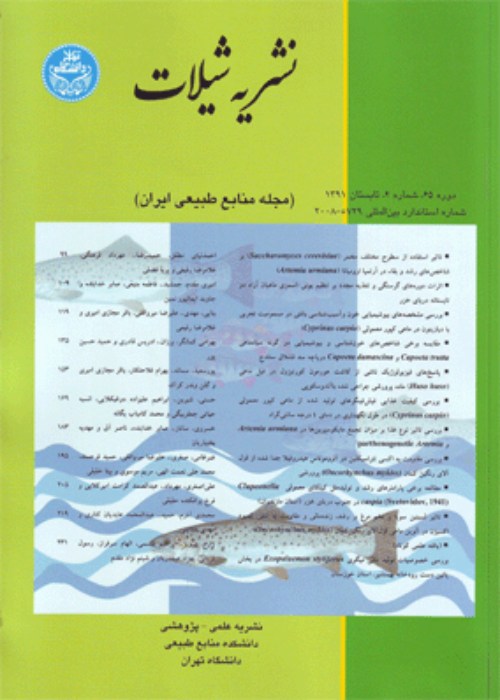Effect of some detergents (anionic surfactants) on hatching percentage, larval abnormalities and embryo cortisol levels in zebrafish (Danio rerio)
Water resources pollution with detergents is one of the most serious subjects in the health and well-being of aquatic ecosystem fields The consequence of entry of detergents into the waste-water in terms of the occurrence of phenomenon of trophic and indestructibility of the hard detergent groups and foam formation, etc. cause pollution of the environment and water resources. Increasing the concentration of these substances in water sources has adverse effects on fish and other aquatic organisms. The aim of this study was to investigate the effect of some commonly used anionic detergents on embryo cortisol levels and then larval abnormalities and hatching percentage in zebrafish (Danio rerio</em>) while exposed to them. For this purpose, fertilized zebrafish eggs were exposed to various detergents (dishwashing liquid as a detergent, washing powder as a cleanser and sodium hypochlorite as a bleach) with concentrations of 1, 1, 0.25 ppm, respectively. To measure the level of cortisol in three stages of, cell division (cleavage), gastrula and hatching, samples were taken from the growing embryos and their cortisol levels were determined. After hatching, the larvae were sampled at different times (5, 10 and 15 days after hatching) and their abnormality was determined. The results show that in terms of the percentage of abnormalities (enlargement of the head, curvature in the dorsal region and tail) and cortisol concentration of treatments exposed to detergents were significantly different from control groups (P < 0.05). So that the most abnormalities (Control 6.67, washing powder 36.67, dishwashing liquid 20, bleach 13.33) were observed in the washing powder treatment. Also, cortisol levels increased from fertilization to gastrula stage and then decreased until hatching, although the amount of cortisol in the control groups decreased from fertilization to hatching (from 4.8 to 3.2 ng / ml). generally, it can be concluded that increasing the use of detergents reduces the success of reproduction and causes abnormalities in aquatic species.
- حق عضویت دریافتی صرف حمایت از نشریات عضو و نگهداری، تکمیل و توسعه مگیران میشود.
- پرداخت حق اشتراک و دانلود مقالات اجازه بازنشر آن در سایر رسانههای چاپی و دیجیتال را به کاربر نمیدهد.


